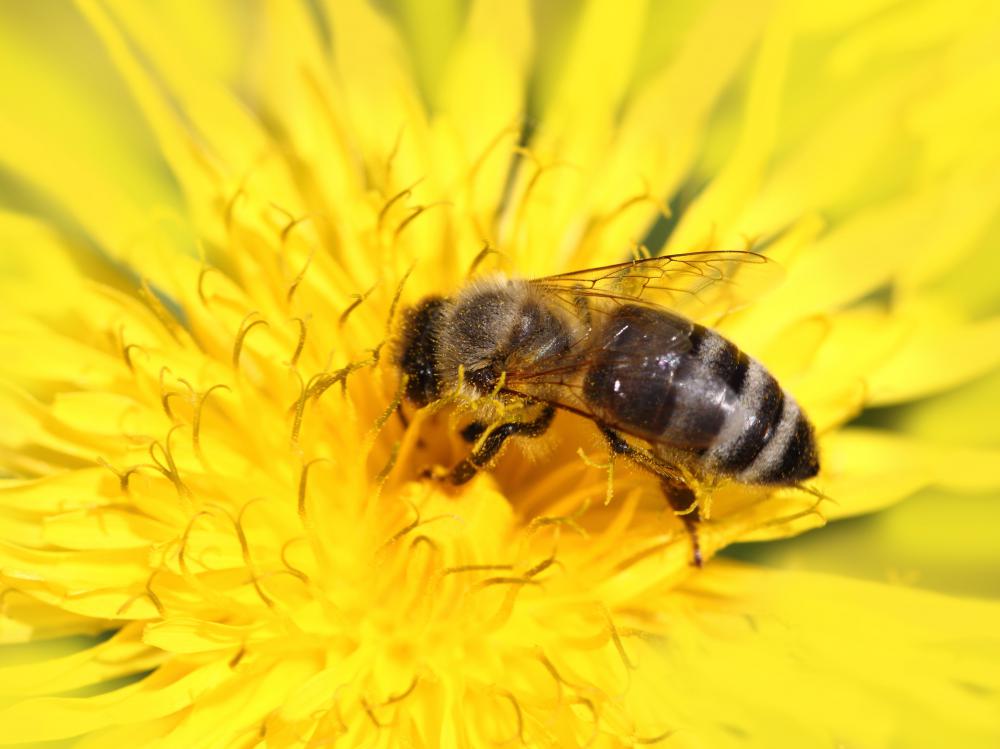At AllThingsNature, we're committed to delivering accurate, trustworthy information. Our expert-authored content is rigorously fact-checked and sourced from credible authorities. Discover how we uphold the highest standards in providing you with reliable knowledge.
What Are the Different Types of Habitat Restoration?
Habitat restoration refers to projects meant to replenish an ecosystem's natural resources following natural or man-made damage. In some cases, habitat restoration is critically important to the survival of native species, the integrity of soil or water, and the continued existence of a natural ecosystem. There are many different types of habitat restoration, including reforestation, riparian buffering, prairie restoration, and coral reef restoration. Engaging in habitat restoration of any kind can help ensure the future of ecosystems that have existed, in some cases, for thousands of years.
Reforestation includes the planting of native trees, shrubs, and grasses to restore a forest area. Reforestation may be necessary after an area has undergone extensive logging or suffered a natural disaster such as a forest fire. If animal species have vanished or suffered greatly reduced numbers from a forested area due to deforestation, reforestation projects may include attempts to re-introduce species into the wild, often from captive specimens. Since an ecosystem is often reliant on an evolved system of interactions between native animals and native plants, it is important that reforestation projects stick to recreating the natural balance of species, rather than importing exotic plants or animals into a new environment.

Riparian buffering is a type of habitat restoration that ensures the integrity and existence of natural water sources. The riparian buffer is the belt of rocks and plants that run alongside the boundaries of a river or stream. Vegetation keeps the water in a stream or river free from sediment by creating a solid barrier instead of an easily-crumbled soil bank. Restoring riparian buffer zones following construction projects, deforestation, or floods, can help ensure that natural water sources remain viable in an ecosystem.

In North America, no habitat has seen as much devastation as the great prairies that stretch across the middle of the United States and Canada. Though developed prairie land allows for many of the farms that help feed the world, the unique species and advantages destroyed through prairie loss may have an important impact on the environment. Historically, prairies have been filled with tall grasses and wildflowers that allow the promotion of bee populations, along with supporting a great many other species. Without bees, cross-pollination is nearly impossible, which makes growing sustainable crops an enormous challenge. Prairie habitat restoration seeks to turn eroded plains into flower and native grass habitats that can support bees as well as many endangered prairie species.

Coral reefs are by far the greatest sources of life in the ocean. Thousands of marine plant and fish species make their homes among expansive reefs, which are oases of life and refreshment amongst the great barren areas of the marine landscape. Coral is sensitive to temperature changes and acidic balances, and is frequently destroyed to create fishing channels or through harvesting for consumer products. Coral habitat restoration uses both synthetic corals and coral-reseeding programs to help ensure that reefs remain filled with life and diversity.
Frequently Asked Questions
What is habitat restoration?

Habitat restoration is the process of returning a natural environment to its original condition after it has been damaged or degraded. This involves activities like replanting native vegetation, removing invasive species, and rebuilding soil health to support a diverse range of plant and animal life, thereby enhancing biodiversity and ecosystem services.
What are the main types of habitat restoration?

The main types of habitat restoration include wetland restoration, which revitalizes marshes and swamps; riparian restoration, focusing on waterway margins; forest restoration, aimed at reforesting deforested areas; grassland restoration, which reestablishes prairie ecosystems; and coral reef restoration, which helps rebuild marine biodiversity hotspots.
Why is habitat restoration important?
Habitat restoration is crucial for maintaining biodiversity, ensuring the survival of various species, and providing ecosystem services such as clean water, air purification, and carbon sequestration. According to the United Nations, restoring 15% of converted lands in priority areas could prevent 60% of expected species extinctions.
How does habitat restoration benefit human communities?
Habitat restoration benefits human communities by mitigating the effects of climate change, reducing the impact of natural disasters, and providing economic opportunities through sustainable practices like eco-tourism and fisheries. Healthy ecosystems also contribute to improved mental and physical well-being for people who live near or visit these natural areas.
What challenges are associated with habitat restoration?
Challenges in habitat restoration include securing adequate funding, overcoming legal and bureaucratic hurdles, and ensuring long-term maintenance and protection of restored areas. Additionally, climate change and ongoing human development pressures complicate restoration efforts by altering the conditions and viability of habitats.
How can individuals contribute to habitat restoration?
Individuals can contribute to habitat restoration by participating in local conservation projects, supporting organizations that focus on ecological restoration, and advocating for policies that protect natural habitats. Personal actions like planting native species, reducing pesticide use, and promoting sustainable land use practices also make a significant impact.
AS FEATURED ON:
AS FEATURED ON:















Discuss this Article
Post your comments